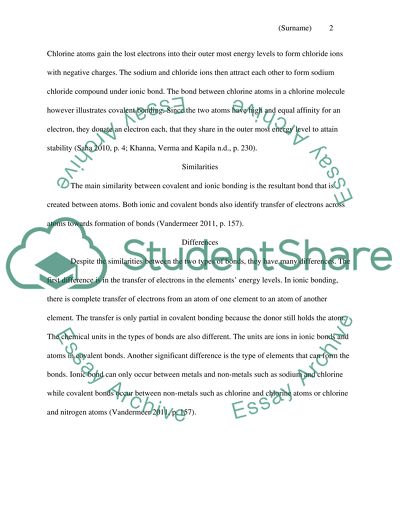Ionic and covalent Bonding Essay Example | Topics and Well Written Essays - 500 words. Retrieved from https://studentshare.org/chemistry/1643266-ionic-and-covalent-bonding
Ionic and Covalent Bonding Essay Example | Topics and Well Written Essays - 500 Words. https://studentshare.org/chemistry/1643266-ionic-and-covalent-bonding.


